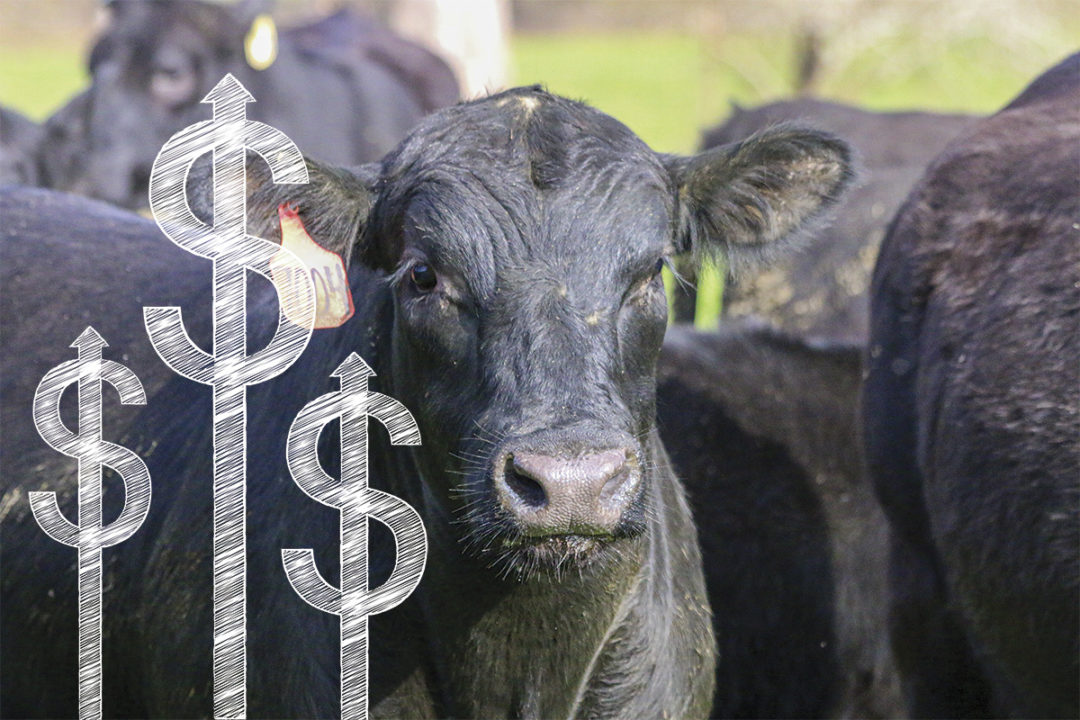Profitability is basically the difference between income and expenses. In today’s world of tight margins, producers should be looking at their own balance sheets now more than ever to make sure they are making smart decisions that can impact either end (income or expense) of the equation. Income is generally a factor of the number of animals (available to sell), weight and price. Expenses are dictated by the number of animals purchased, purchase price per animal, feed, vet, labor, interest and other fixed costs.
Whenever profitability is challenged due to high input costs, there tends to be a lot of talk about decreasing expenses such as feed costs. This isn’t surprising, as feed generally represents the largest single expense within any operation, outside of the purchase price of the animal. And while decreasing inputs may sound like a good idea on the outside, it’s only a good idea if there is not an associated health or performance loss that outweighs the economic benefit of the lower inputs.
While high feed costs may seem somewhat out of your control, there are management practices that might be worth implementing to help overcome challenges without sacrificing productivity and your bottom line.
Trade-off between saving and performance
Ultimately, there are two ways to improve profitability: increase income or decrease expenses. Either way can be effective. However, cutting costs can sometimes decrease income by multiples over and above the savings, which can have lasting effects. For example, shorting cows of key minerals may result in delayed rebreeding, setting cows back one or more cycles. This can have a multiyear effect in terms of decreasing revenue per cow for multiple years. Similar examples can be found on the backgrounding and feedlot side in terms of vaccinations, ionophores and immune support technologies. While they may add some additional cost upfront, one has to determine whether the cost savings is worth the risk in terms of sacrificing health and performance.
Let’s break down expenses a bit more. Purchase price tends to be the greatest expense in the backgrounding and feedlot side of the business. However, it’s hard to pay less when there are competing bidders for the same animal. Because of this, the less-desirable animal is often then considered. This may be a good idea for some producers, but nearly always comes with a catch in terms of animal size, breed, health status, etc. At this point, you must ask yourself: Can your health and management program tolerate this type of animal, which is generally higher risk, with greater chance for sickness, added vet expenses and potential death loss?
Feed is the second-greatest expense, and feed costs have increased dramatically in the last two years. Animals still need to be fed, so the question becomes “Should I decrease expenses by cheapening up the ration, or should I look for technologies that may cost a couple of extra cents upfront but can improve return through better digestibility and feed efficiency?” The reality is: Some technologies, such as ionophores and digestive health additives, generally provide an even greater economic value when feed costs are inflated. Quite simply, they allow for animals to get more out of the expensive feed than what they normally would have. Incorporating a digestive health and immune support product into cattle feed can provide multiple benefits, such as supporting rumen fermentation and digestive efficiency. It can also help strengthen the immune system in situations where health challenges may arise, such as weaning, receiving, processing, heat stress, mycotoxin challenges and hoof health issues.
Increasing the population of both starch- and fiber-utilizing bacteria within the rumen allows the animal to be more effective in turning feed into energy to be used for growth. Improved digestibility can result in better feed utilization by the animal. With a digestive and immune support feed additive, you can help lessen the amount and size of undigested feed particles (such as corn) in the manure, thus allowing for more energy to be utilized by the animal for growth. Remember, as digestibility is enhanced, less feed is needed for cattle to gain weight, resulting in better feed efficiency and oftentimes reduced cost of gain.
Cut costs or invest in efficiency?
When should we cut costs versus investing more to improve efficiency? The key is balance. Make sure you purchase the right animal for your operation, get the most out of your feed dollar, utilize technologies that are research-proven to enhance performance efficiency at today’s costs and distribute your labor and fixed costs among as many animals as you’re capable of managing. Cost of gain is highly driven by feed efficiency (along with ration cost). In most cases, it only takes a small benefit in feed-to-gain ratio to result in an improved economic return. Ultimately, you want to get the most out of your feed as possible, assuming the payback outweighs the cost. With a research-proven digestive and immune support product, you can help make this achievable for your cattle.
Remember, increased profits can definitely come by decreasing costs. However, you must be careful because decreasing costs can sometimes negatively affect health or performance to a level at which the loss of income far exceeds the cost savings. Don’t forget it’s also possible to increase profitability by increasing costs in one or more areas. This is why cattle are vaccinated. You spend a little to hopefully get more back. Implants are a similar analogy. Increasing herd size or the number of animals can also help with distributing fixed costs across more animals. However, don’t exceed the physical capacity of your facilities or your ability to manage from a labor standpoint. Astute producers know that, often, trying to save your way to profitability can result in the financial demise of your operation.










